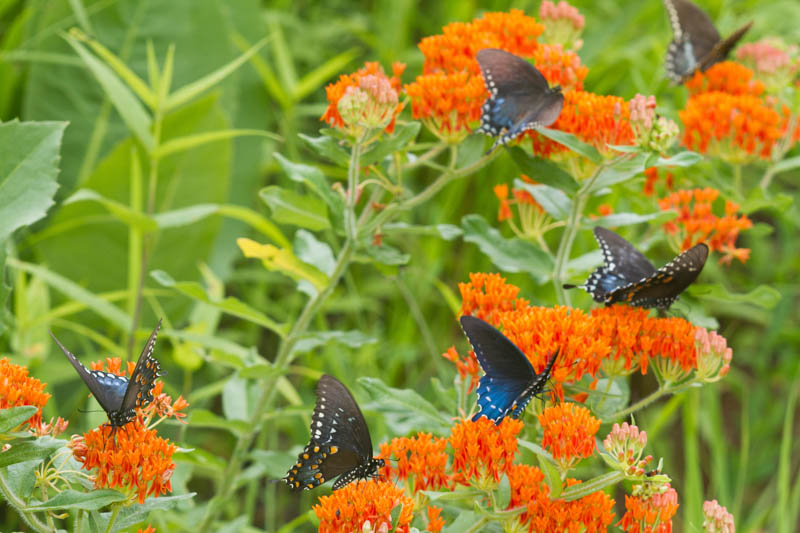By cultivating these butterfly-friendly flowers, you'll provide essential nourishment to local butterfly populations, aiding in pollination of your garden and surrounding areas
Creating a butterfly-friendly garden is important for several reasons:
Conservation: Many butterfly species are in decline due to habitat loss, pollution, and climate change. A butterfly garden provides vital habitat and food sources, helping to conserve these beautiful and important insects.
Pollination: Butterflies are effective pollinators for many plants, including some crops. By visiting flowers for nectar, they facilitate the cross-pollination necessary for plant reproduction, contributing to a healthy and diverse ecosystem.
Biodiversity: A garden that attracts butterflies also supports a wider range of wildlife, including other beneficial insects and birds, increasing overall biodiversity.
Environmental Education: Butterfly gardens serve as excellent outdoor classrooms, offering educational opportunities for people of all ages to learn about nature, ecology, and the importance of conservation.
Mental Health Benefits: Interacting with nature, such as watching butterflies fluttering in the garden, can have therapeutic effects, reducing stress and improving mental well-being.
Beautification: Butterflies add beauty and interest to a garden with their varied colors and patterns, enhancing the aesthetic appeal of the space.
 Pipevine Swallowtails (Battus philenor) on Butterfly Milkweed (Asclepias tuberosa)
Pipevine Swallowtails (Battus philenor) on Butterfly Milkweed (Asclepias tuberosa)
When selecting flowers and plants to attract butterflies, certain general rules can guide you to create a vibrant and welcoming habitat for these pollinators:
Opt for Bright, Nectar-Rich Flowers:
Plant a Variety of Flowers:
Incorporate Native Plants:
Provide Host Plants for Caterpillars:
Ensure Continuous Blooming:
| Genus | Asclepias, Allium, Amelanchier, Aster, Pulmonaria, Rudbeckia, Salvia, Achillea, Cosmos, Cercis, Coreopsis, Calendula, Agastache, Ageratum, Alcea, Hemerocallis, Echinops, Echinacea, Helenium, Monarda, Lavandula, Lobularia, Liatris, Sedum, Zinnia, Vernonia, Phlox, Pentas, Solidago, Eryngium, Nepeta, Syringa, Tagetes |
|---|---|
| Attracts | Butterflies |
| Genus | Asclepias, Allium, Amelanchier, Aster, Pulmonaria, Rudbeckia, Salvia, Achillea, Cosmos, Cercis, Coreopsis, Calendula, Agastache, Ageratum, Alcea, Hemerocallis, Echinops, Echinacea, Helenium, Monarda, Lavandula, Lobularia, Liatris, Sedum, Zinnia, Vernonia, Phlox, Pentas, Solidago, Eryngium, Nepeta, Syringa, Tagetes |
|---|---|
| Attracts | Butterflies |
Create a membership account to save your garden designs and to view them on any device.
Becoming a contributing member of Gardenia is easy and can be done in just a few minutes. If you provide us with your name, email address and the payment of a modest $25 annual membership fee, you will become a full member, enabling you to design and save up to 25 of your garden design ideas.
Join now and start creating your dream garden!
Create a membership account to save your garden designs and to view them on any device.
Becoming a contributing member of Gardenia is easy and can be done in just a few minutes. If you provide us with your name, email address and the payment of a modest $25 annual membership fee, you will become a full member, enabling you to design and save up to 25 of your garden design ideas.
Join now and start creating your dream garden!